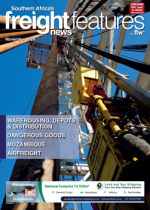Technological innovation, increasingly strict environmental regulations, disruptions to shipping, and market dynamics are among the main trends shippers and transporters of dangerous goods are factoring into their planning. Digitisation of the entire logistics chain is required to meet the challenges of staying compliant with constantly changing regulations and tracking the product from raw material through to the end customer.Research and Markets puts the value of the logistics market Internet of Things (IoT) at $53 billion, rising to $120bn by 2030.Visibility is essential as both shippers and the end customer want to know where the products are at all times.They also want to know the state of the product.According to Transporte Fernández y Aedo, more than 70% of dangerous goods transport companies are expected to incorporate advanced real-time monitoring systems by the end of 2025. These systems can monitor temperature, pressure and potential leaks, ensuring transport safety and regulatory compliance. Mordor Intelligence estimates the size of the smart sensor market to be $55.86bn and predicts it will grow to $129bn by 2029.The development of monitoring devices such as smart temperature sensors has run in parallel with the shift towards the digitisation of supply chains and the growth in the IoT and Industrial Internet of Things (IIoT).Significant changes in the transport of dangerous goods are being forced by government regulations aimed at reducing carbon footprints.Euro 7 regulations, which will be phased in over the next five years, are designed to reduce gas and particle emissions from the engine, as well as non-exhaust emissions (microplastics from tyres and particles from brakes).There is already an impact on global supply chains.In January, the European Union's Emissions Trading System (EU ETS) was extended to cover CO2 emissions from all vessels of 5 000 gross tonnage and above entering EU ports, regardless of the f lag they f ly.The EU is also rolling out its Carbon Border Adjustment Mechanism, which puts a value on emissions emanating from the production and transport of carbon-intensive goods.There is a greater need for training due to the focus on emissions and greater complexity of the dangerous goods transport value chain, which is being exacerbated by global shipping disruptions.Despite these challenges, The Business Research Company predicts that the value of the hazardous goods logistics market will grow from $234bn in 2024 to $311bn by 2028. ER

